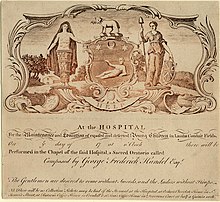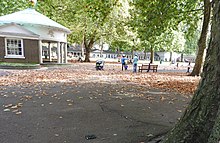
William Hogarth was an English painter, engraver, pictorial satirist, social critic, editorial cartoonist and occasional writer on art. His work ranges from realistic portraiture to comic strip-like series of pictures called "modern moral subjects", and he is perhaps best known for his series A Harlot's Progress, A Rake's Progress and Marriage A-la-Mode. Knowledge of his work is so pervasive that satirical political illustrations in this style are often referred to as "Hogarthian".

The Thomas Coram Foundation for Children is a large children's charity in London operating under the name Coram. It was founded by eighteenth century philanthropist Captain Thomas Coram who campaigned to establish a charity that would care for the high numbers of abandoned babies in London, setting up the Foundling Hospital in 1739 at Lamb's Conduit Fields in Bloomsbury. By the 1950s social change had led to the closure of the hospital and the charity adopted the broader name Thomas Coram Foundation for Children in 1954.

The Foundling Museum in Brunswick Square, London, tells the story of the Foundling Hospital, Britain's first home for children at risk of abandonment. The museum houses the nationally important Foundling Hospital Collection as well as the Gerald Coke Handel Collection, an internationally important collection of material relating to Handel and his contemporaries. After a major building refurbishment, the museum was reopened to the public in June 2004.

Captain Thomas Coram was an English sea captain and philanthropist who created the London Foundling Hospital in Lamb's Conduit Fields, Bloomsbury, to look after abandoned children on the streets of London. It is said to be the world's first incorporated charity.
A foundling hospital was originally an institution for the reception of foundlings, i.e., children who had been abandoned or exposed, and left for the public to find and save. A foundling hospital was not necessarily a medical hospital, but more commonly a children's home, offering shelter and education to foundlings.

Margaret Cavendish Bentinck, Duchess of Portland was the richest woman in Great Britain of her time, styled Lady Margaret Harley before 1734, Duchess of Portland from 1734 to her husband's death in 1761, and Dowager Duchess of Portland from 1761 until her own death in 1785.
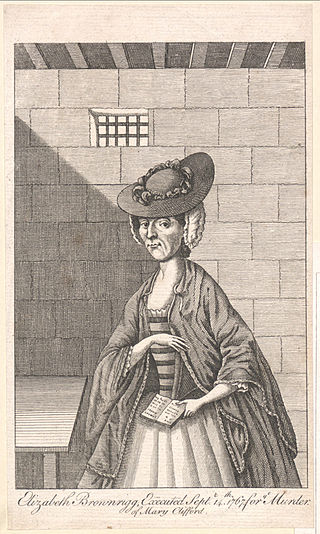
Elizabeth Brownrigg was an 18th-century English murderer. Her victim, Mary Clifford, was one of her domestic servants, who died from cumulative injuries and associated infected wounds. As a result of witness testimony and medical evidence at her trial, Brownrigg was hanged at Tyburn on 14 September 1767.

Coram's Fields is a seven acre urban open space in the Kings Cross area of the London Borough of Camden. Adults are only permitted to enter if accompanied by children.

Ashlyns School is a mixed secondary school and sixth form located in Berkhamsted, Hertfordshire, England. The school was established in 1935 as the final location of the Foundling Hospital, a children's charity founded in London in 1739. The Berkhamsted building converted into a school in 1955. Ashlyns School is noted as an example of neo-Georgian architecture and is a Grade II listed building.

Selina Hastings, Countess of Huntingdon was an English Christian and religious leader who played a prominent part in the religious revival of the 18th century and the Methodist movement in England and Wales. She founded an evangelical branch in England and Sierra Leone, known as the Countess of Huntingdon's Connexion.
Balthazar or Balthasar Nebot, was a painter active in England between 1729 and 1765.

Portrait of Captain Thomas Coram is a 1740 portrait of philanthropist Thomas Coram painted by William Hogarth. The portrait, which represents Hogarth's highest achievement in direct portraiture, was not created as a commission and was instead donated to Coram's Foundling Hospital. The portrait is divided into two sections: The left side represents Coram's sea ventures, a major source of his wealth. The right side shows a curtain pulled over a mother figure with a child.
Frances Seymour, Countess of Hertford, later the Duchess of Somerset, was a British courtier and the wife of Algernon Seymour, Earl of Hertford, who became the 7th Duke of Somerset in 1748. She was also known as a poet, literary patron and woman of letters. Her great-aunt by marriage, Anne Finch, Countess of Winchilsea, influenced her literary development. She was also influenced by the poet Elizabeth Singer, with whom she became acquainted in her youth at Longleat, where she grew up.

The Foundling Hospital Anthem, also known by its longer title "Blessed are they that considereth the poor" [sic], is a choral anthem composed by George Frideric Handel in 1749. It was written for the Foundling Hospital in London and was first performed in the chapel there. Handel wrote two versions, one for choir only and one for choir and soloists. Composed 10 years before his death, it was Handel's last piece of English church music.
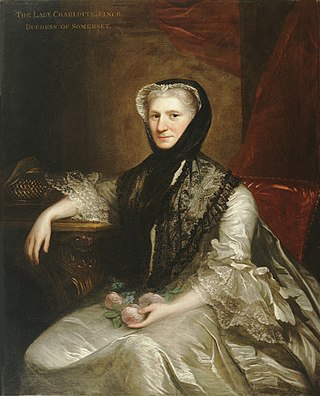
Charlotte Seymour, Duchess of Somerset, formerly Lady Charlotte Finch, was the second wife of Charles Seymour, 6th Duke of Somerset. Lady Charlotte was the first of twenty-one 'ladies of quality and distinction' who signed Thomas Coram's first petition, presented to King George II in 1735, calling for the establishment of the Foundling Hospital.

Elizabeth Onslow was an English aristocrat and social reformer.

Anne Newport, Baroness Torrington was an eighteenth-century aristocrat and social reformer.

Lady Mary Tufton was an English aristocrat and philanthropist.

Frances, Baroness Byron, was the second daughter of William Berkeley, 4th Baron Berkeley of Stratton, and his wife Frances Temple. She was the third wife of William Byron, 4th Baron Byron and a great-grandmother of the poet Lord Byron.
In 1730 Thomas Coram approached aristocratic women with a petition to support the establishment of a Foundling Hospital, which he would present to King George II.






